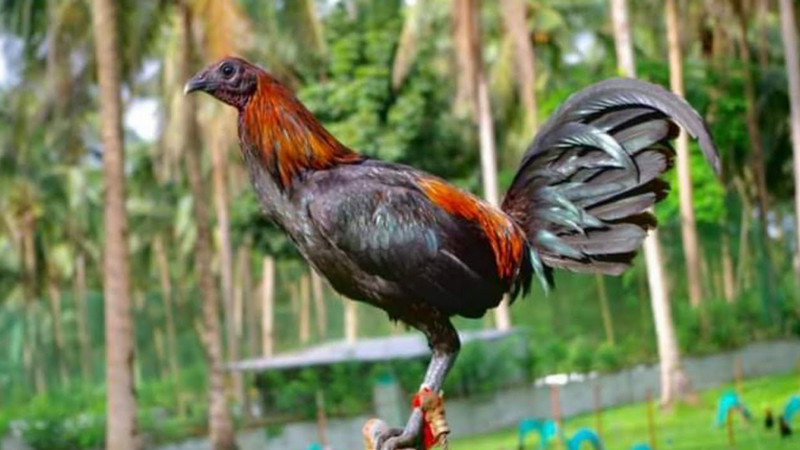The Peruvian gamefowl is one of the most popular bloodlines of fighting cock roosters in the Philippines and is also among the most expensive breeds. In this incredibly long article, we can translate and proofread the complete history of the great Peruvian gamefowl. This is quite an interesting yet long story, so I enjoyed reading it. The link to the original Spanish version is provided at the end of this article.
The Peruvian rooster underwent many stages of improvement until our current standard was achieved. It would be countless to mention the architects of this story of panache and courage.
How the Peruvian Gamefowl was Developed
The Peruvian fighting cock was developed by a Peruvian named Don Humberto Gregorio Pedraglio Oddone, who was born in Lima on November 17, 1899. They are Italian immigrants. The Peruvian chicken was developed from the late 1930s until its perfection in the early 1970s.
Since cockfighting is no longer legal in the USA and other parts of North America, Peruvian gamefowls are not popular in the US as there are other popular bloodlines like Sweater, Roughhead, Lemon, and others, but they are extremely popular in Asia, such as the Philippines.
Peruvian gamefowl is a fairly old breed, dating back to the 1900s. It was possibly perfected in the early ’70s. It was developed by crossing various Oriental gamefowl with Old English Games and Spanish gamefowl. The Oriental breeds mentioned mostly were Shamos, Malay, and Asil.

Most Peruvians come in the brown-red variety, but all gamefowl appear in others as well. They may come single or pea combed as most gamefowl, but they usually appear in the straight-combed variety. These birds may range from 4-9 kilos, with the most common being 8-10, though size doesn’t affect them at all as far as flying or speed. They may also come naked, neck, or rumpless.
In Peru, these birds can be found all over and are often shown in long knife fights almost weekly, as in Peru, cockfighting is much like Baseball or Football in America. The gamefowl is usually bred by a team of five to six breeders and kept in small pens for about 3X3. When breeding the Peruvians, the main thing in mind is gameness, with speed, power, cut, and aggressiveness to follow, and the main fault being endurance. Stags must be separated early, as they will last around 4 to 5 months.
Peruvian cocks can sometimes be man-fighters, especially if not handled, which is why many Peru breeders will also keep cocks and hens separate, only putting them in the same pen for breeding and then taking them back out. The Peruvian’s aggressive fighting style makes them a favorite in crossbreeding with other American gamefowl breeds.
Rarely do you see any type of inbreeding in Peru, unlike in America. They believe it weakens the birds and only outbreeds them to keep them strong. The Peruvian gamefowl has only recently been imported to the US and is only in the hands of a few breeders.
Peruvian gamefowl is also known as an exhibition fowl in Peru, though gameness is still one of the main focuses.
Peruvian gamefowl price in the Philippines
Although some ships are from the US, most of these bloodlines are already crossed. Cockfighting is illegal in the US, and one can think, why would someone from the US have a pure-breed Peruvian fighting rooster? Yes, similar to the Philippines, there are remote places where cockfighting is held, but it is highly unlikely and extremely rare. Only people who bet their lives would do that.
Gamefowl enthusiasts will find ways to get a purebred from South America, but the current pandemic restrictions are too tough to ignore.
The cost of Peruvian breeders in the Philippines (if you can find a good breed line) is around P175,000 to P250,000 for one male and two females at around 5 months old (ready to lay). This is expensive for ordinary Sabungeros, but it is nothing for people with deep pockets.
Sometimes, the popularity of the Peruvian gamefowl also results from gullibility. Although it is highly popular, American bloodlines are still the leaders in this field, so why spend a lot of money on something that is half-proven?
The Peruvian gamefowl fever will be here to stay, but it cannot change the fact that its popularity is not yet backed by a proven record similar to what American breeds have achieved.
Where to buy Peruvian fighting cocks
This question is always hard to answer unless you are a die-hard Sabungero with many contacts. I advise you not to search online because it is highly likely that you will get scammed. The only thing to do is ask your fellow Sabungeros, especially those with Gamefarms and other big breeders.
See Also:
- Grey Gamefowl Fighting Style and the Top Grey Rooster Breeders
- Murphy Whitehackle Gamefowl: All You Need to Know
- Hennie Gamefowl and Its Fighting Style
- The Leiper Hatch Gamefowl and Its Fighting Styles
- Hatch Gamefowl History and Fighting Style
